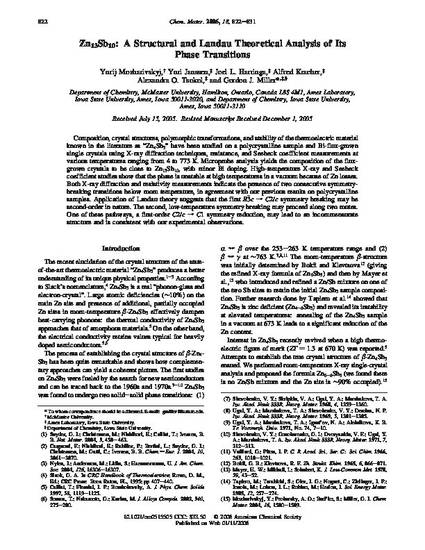
Composition, crystal structures, polymorphic transformations, and stability of the thermoelectric material known in the literature as “Zn4Sb3” have been studied on a polycrystalline sample and Bi-flux-grown single crystals using X-ray diffraction techniques, resistance, and Seebeck coefficient measurements at various temperatures ranging from 4 to 773 K. Microprobe analysis yields the composition of the flux-grown crystals to be close to Zn13Sb10, with minor Bi doping. High-temperature X-ray and Seebeck coefficient studies show that the phase is unstable at high temperatures in a vacuum because of Zn losses. Both X-ray diffraction and resistivity measurements indicate the presence of two consecutive symmetry-breaking transitions below room temperature, in agreement with our previous results on polycrystalline samples. Application of Landau theory suggests that the first R3̄c → C2/c symmetry breaking may be second-order in nature. The second, low-temperature symmetry breaking may proceed along two routes. One of these pathways, a first-order C2/c → C1 symmetry reduction, may lead to an incommensurate structure and is consistent with our experimental observations.
Available at: http://works.bepress.com/gordon-miller/20/

Reprinted (adapted) with permission from Chem. Mater., 2006, 18 (3), pp 822–831. Copyright 2006 American Chemical Society.